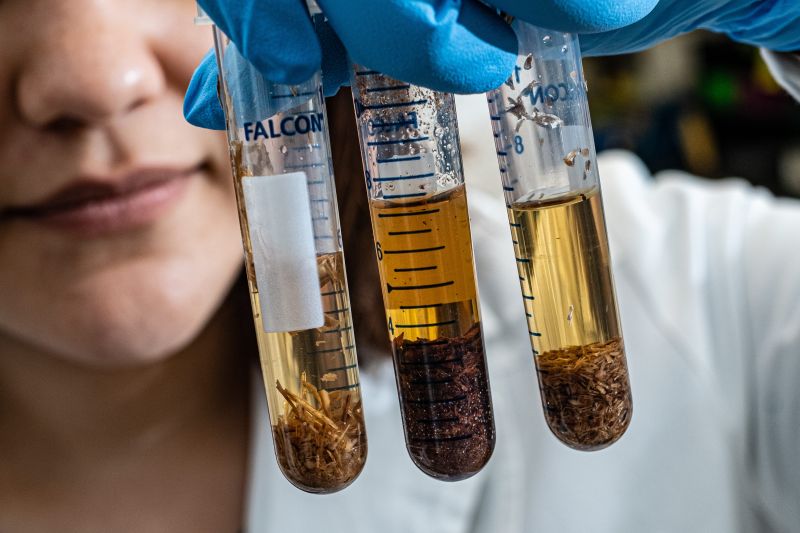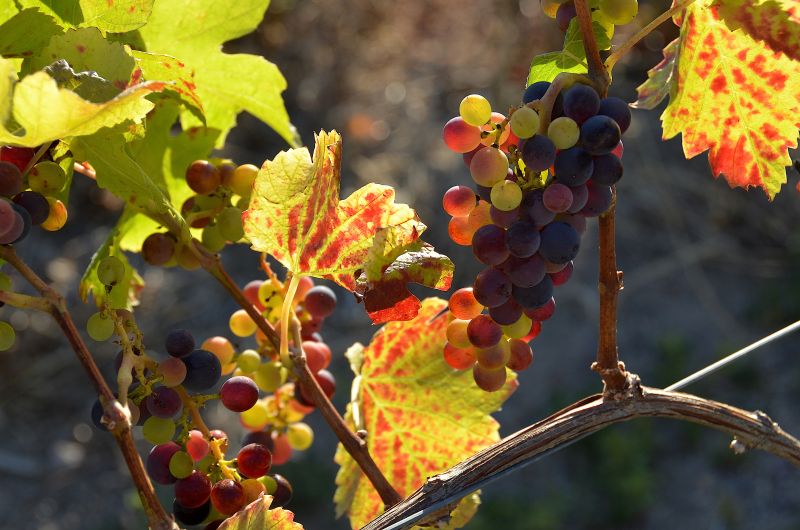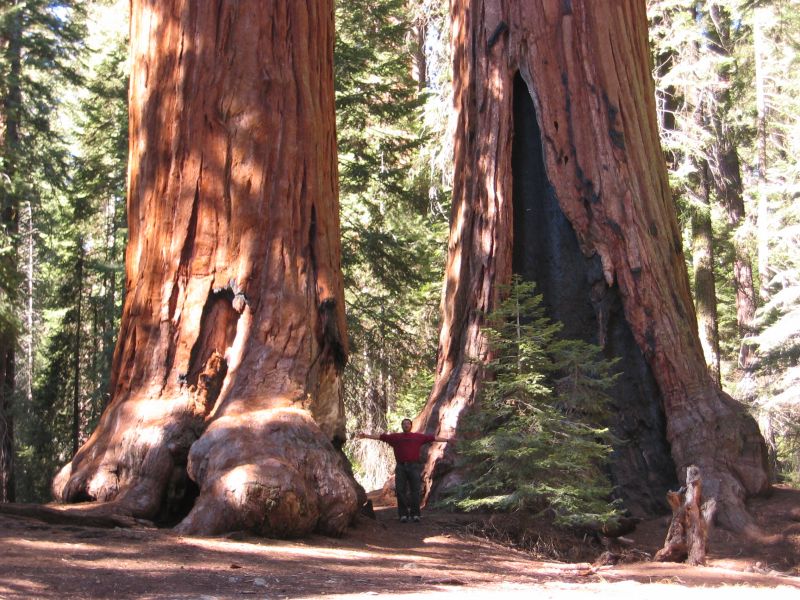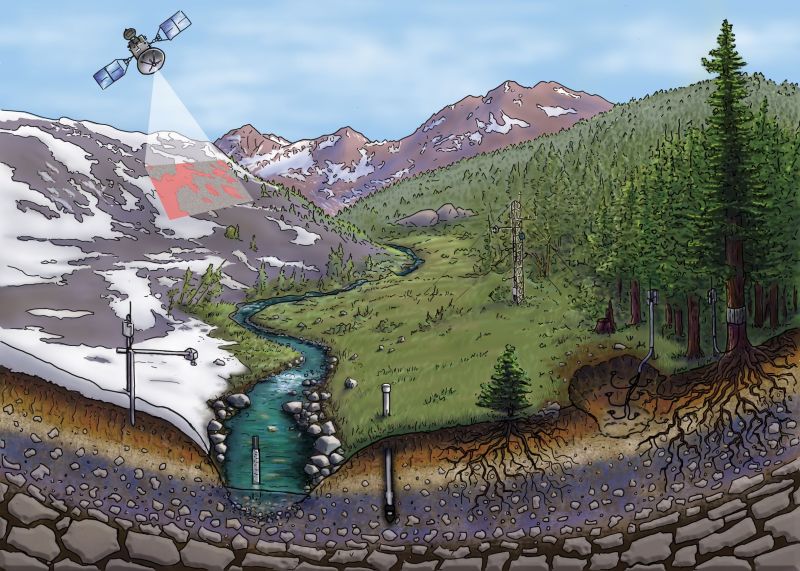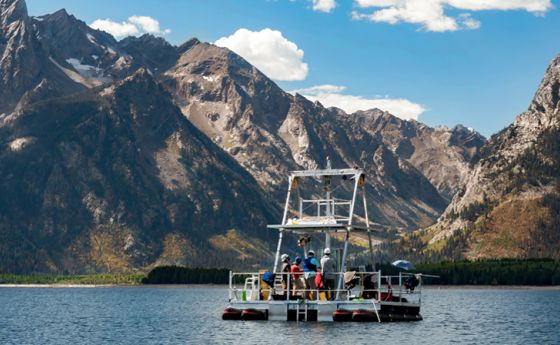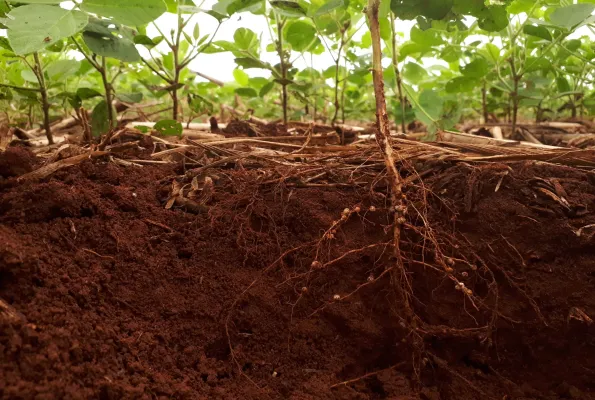
No soils, no life
They’re beneath our feet, but we seldom hear important signals in the soils
A nation that destroys its soils destroys itself." President Franklin D. Roosevelt
We walk on soils, but often give little thought to what’s right under our feet. In fact, soils are the nation’s – and the world’s – breadbasket, providing food and a host of other necessities, including new medicines and materials.
No soils, no life.
Soils form over hundreds of years but can be destroyed by a single event, such as a hurricane. They’re vulnerable to wind and water erosion; pollutants, including runoff from highways; and nutrient loss.
Despite a humble exterior, soils are complex ecosystems composed of organic matter, minerals, water, air – and billions upon billions of organisms. These ecosystems orchestrate the processes essential for plant growth, as well as food and fiber production.
The U.S. National Science Foundation is funding researchers who study soils and their importance in our lives. "As the planet’s population grows, scientists need a better understanding of the soil ecosystems that play a critical role in supporting societies around the world," says Enriqueta Barrera, a program director in NSF’s Division of Earth Sciences.
During Earth Science Week 2020, with its theme "Earth materials in our lives," NSF celebrates the soils beneath us.
Ordering in for dinner? Plants long ago perfected the process.
Next time you’re thinking about whether to cook dinner or order in, plants have been way ahead of you for eons.
NSF-funded scientists at Rice and Cornell universities discovered that plants "call" for nutrients, using soil bacteria as a delivery service. Plants read the local environment and, when necessary, make and release molecules called flavonoids. These molecules attract microbes that infect the plants and form nitrogen nodules in the plants’ roots, generating food.
When nitrogen is already available, plants don’t need to order in, says Rice biogeochemist Caroline Masiello. Their ability to sense the presence of a nearby, slow-release nitrogen source – such as organic carbon – satisfies plants' "hunger," and stills their flavonoid signals.
Understanding how soil carbon affects these signals offers scientists new ways of engineering beneficial interactions between plants and microbes and designing additives to balance deficiencies in soil.
Leaf 'tattoo' monitors health of grapevines and apple trees
Farmers and fruit growers have found that climate change is leading to increased ozone concentrations on the soil surface in their fields and orchards. That ozone can cause irreversible plant damage, reduce crop yields and threaten the food supply.
Now, NSF-funded researchers led by Trisha Andrew at the University of Massachusetts Amherst have developed a way of placing "tattoos" on plant leaves. These polymer tattoos allow growers to detect and measure ozone damage, even at low levels. The tattoos also enable frequent and long-term monitoring of ozone damage to economically important crops such as grapes and apples.
The scientists selected grapes (Vitis vinifera L.) as their model plant because the fruit yield and quality of grapevines decrease significantly when grapes are exposed to ground-level ozone, leading to economic losses.
Ground-level ozone can be produced by the interaction between nitrates in fertilizer and the sun, for example, and is mitigated by early detection and soil treatments.
The researchers hope their plant tattoo will be used nationwide by farmers and fruit growers, who could place a few "reporter plants" among crops to periodically monitor soil ozone levels.
Soil-plant communication: A two-way street
If soil is "communicating" with plants, so, too, are plants with soil.
Soil serves as the foundation for much of Earth’s biodiversity. There organisms interact with each other and with plants, serving important functions in ecosystems.
Trees, for example, are important drivers of microbial communities in the soil beneath them. Scientist Stephen Hart of the University of California, Merced, and colleagues discovered that giant sequoias influence the microbiota of the soil where they grow.
"Most people look toward the sky when they approach California’s giant sequoias, in awe of the size of a single tree," says Hart. "A mature sequoia’s main trunk can weigh more than 130 Volkswagen Beetles. But I look down and ask questions about the hidden half that’s belowground: the soil."
Because of the trees’ long lives and height, Hart believed sequoias would have big impacts on the soil beneath them. He was right.
His team examined soils in the Merced and Mariposa sequoia groves in Yosemite National Park and found that communities of microbes under giant sequoia trees were twice as species-rich as those beneath neighboring sugar pines.
The soil in each grove ultimately comes from its geologic substrate: rocks and sediments below. That substrate contributes to the diversity and composition of the microbial communities beneath trees, Hart says.
"We now know a lot more about how organisms like bacteria influence human health, the so-called human microbiome. It’s likely that interactions among microorganisms are also critical for the health of other species, like the giant sequoia, the largest living thing on Earth."
Next time you visit a giant sequoia tree "look up," Hart says, "and be amazed not only by its size and presence aboveground, but look down at the soil and ponder how these magnificent trees are weaving an imprint on the unseen world below."
With NSF support, Hart is expanding his research to other giant sequoia groves in a range of geologic substrates.
Earth’s 'critical zone': Where soil forms, allowing life to flourish
Earth’s critical zone—the layer between the forest canopy and the base of weathered bedrock – is crucial to the planet’s functions. Here, soil forms from the breakdown of rocks, allowing life to flourish.
To better understand and protect this narrow zone, NSF’s Critical Zone Collaborative Network funds grantees who are investigating key questions: How does urbanization affect critical zone processes; how do critical zones function in semi-arid landscapes, and what role does dust play in sustaining these ecosystems; how can the health of the critical zone be restored after disturbances such as wildfires and floods; and how is sea level rise changing the coastal critical zone?
"There’s still so much to be learned about the planet we call home," says Richard Yuretich, director of the Critical Zone Collaborative Network program. "Scientists are developing systems-level models to predict how the critical zone is responding to natural and human-altered processes. The research is important for future decisions about how humans and the environment should interact."
To find the best path forward, scientists say, we need to listen to – and heed – signals in the soils.
No soils, indeed no life.

